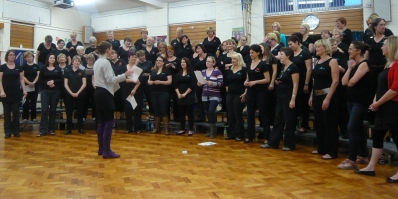It's a well-documented feature of the creative life that the biggest obstacles to productivity are internal. You know you should get on with the work, you want - in principle - to get on with the work, but in practice, you don't. You check your email, you eat a bowl of cereal, you do the hoovering.* Mark Forster refers to this active procrastination as resistance.
Another well-documented feature of creativity is what Sally Holloway calls 'background processing'. You work at something for a period of time, and get stuck. Then, later the solution to your problem will magically appear when you're out for a walk, or cooking, or just waking up. The inner recesses of your brain continue to work on things between your conscious sessions focused upon it. If you prefer a more organic, rather than computer-based metaphor for this process, I also think of it sometimes in ruminant terms - the conscious effort is the process of chewing the cud, then you send it down to your brain's second stomach for digestion between times.





